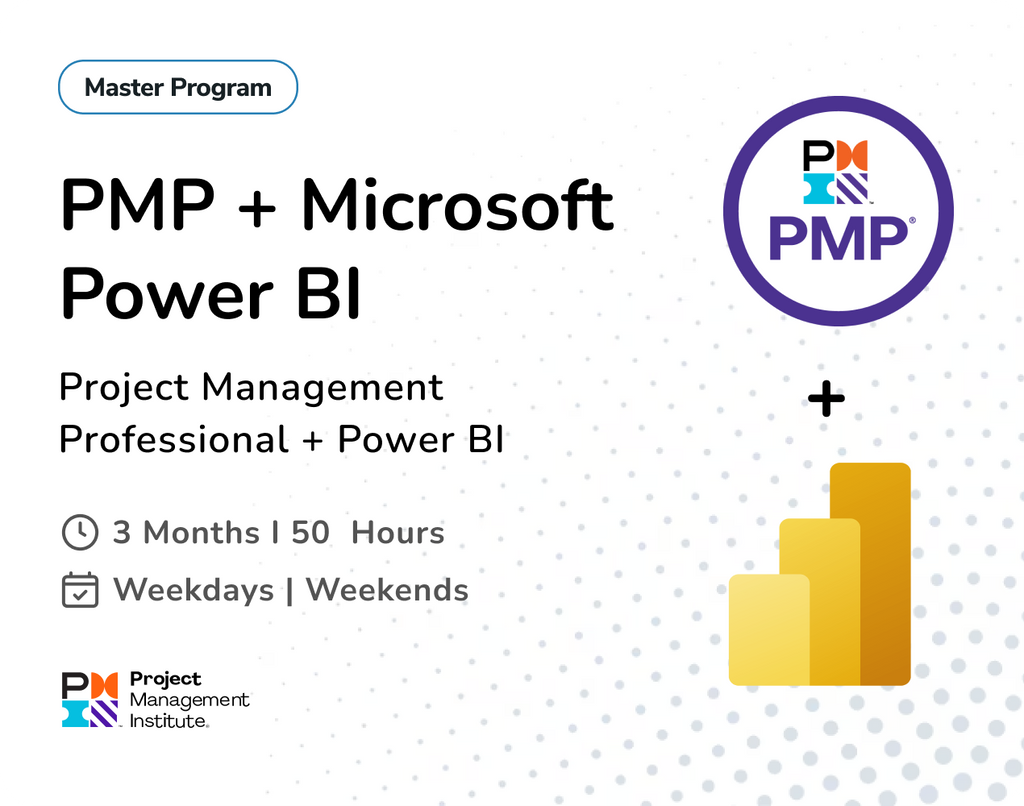Quantitative techniques involve mathematical and statistical models that allow PMOs to make data-driven decisions. These techniques help analyse historical data, forecast project trends, assess risks, and allocate resources efficiently. When integrated with business intelligence platforms like Power BI and AI algorithms, these models unlock new levels of precision and foresight.
Why Power BI and AI in PMO?
- Automates the reporting of complex metrics like Earned Value
- Uses historical data for AI-driven forecasts and recommendations.
- Offers interactive dashboards to identify trends, risks, and deviations instantly.
- Combines visual analytics with machine learning for smarter planning and risk mitigation.

Quantitative techniques fall into two key categories:
- Descriptive Techniques – Focused on understanding past and current project status.
- Predictive Techniques – Used to forecast outcomes and enable proactive decision-making.
Let’s explore each of these in detail.
Descriptive Quantitative Techniques in PMO
Descriptive analytics answers “What has happened?” It provides insights based on historical data, helping the PMO understand project performance, team productivity, cost behaviour, and schedule adherence.
Common techniques used in descriptive scenarios include:
- Earned Value Management (EVM)
- Project Performance Analysis
- Trend Analysis
- Pareto Analysis (80/20 Rule)
- Control Charts
- Histograms and Frequency Distributions
Project Performance Analysis:
- Project performance analysis helps PMOs monitor how well a project is progressing by comparing actual results with planned objectives across cost, schedule, and scope.
- By visualizing key performance indicators (KPIs) such as progress rates, task completion, and timeline variances using Power BI, PMOs can ensure alignment with strategic goals and make timely corrective actions when deviations occur.

Earned Value Management (EVM):
- EVM is a powerful project performance tool that compares planned progress with actual progress in terms of cost and schedule.
- With Power BI, you can visualize Planned Value (PV), Earned Value (EV), and Actual Cost (AC) through dynamic dashboards. These metrics help stakeholders identify cost overruns or schedule delays early.
- When enhanced with AI capabilities, such as anomaly detection or Power BI's Smart Narrative, you can automatically flag unusual variances and generate natural-language summaries of project health, reducing manual oversight.

Critical Path Method (CPM):
- CPM identifies the sequence of tasks that directly affect a project’s end date. By importing project schedules (from Excel or Microsoft Project) into Power BI, you can create a Gantt chart or timeline that highlights critical activities and potential delays.
- AI-enhanced visuals in Power BI, like forecasting task durations based on historical project performance, can predict possible bottlenecks in real-time and suggest reallocation strategies.

Program Evaluation and Review Technique (PERT):
- PERT is used to estimate project timelines by combining optimistic, pessimistic, and most likely task durations.
- In Power BI, you can calculate the PERT expected time using formulas and visualize estimated vs. actual durations across projects.
- AI capabilities can help identify inconsistencies between estimated and actual performance over time and learn to improve estimation accuracy.

Pareto Analysis (80/20 Rule):
- Pareto Analysis helps identify the top causes that contribute to most project issues or delays.
- Using a Pareto chart in Power BI (a combo of bar and line chart), you can visualize which tasks or risk types contribute to the majority of project issues.
- AI can automatically detect recurring patterns or suggest new insights such as emerging trends in issue categories.

Predictive Quantitative Techniques in PMO
Predictive analytics answers “What is likely to happen?” It uses historical data, statistical models, and machine learning to forecast outcomes and recommend preventive actions.
Common techniques used in predictive analytics include:
- Monte Carlo Simulation
- Regression Analysis
- Time-Series Forecasting
- What-If Analysis
- Exponential Smoothing & Moving Averages
Monte Carlo Simulation:
- Monte Carlo Simulation helps you understand the risk and uncertainty in project forecasts by running thousands of potential outcome scenarios.
- In Power BI, using R or Python scripting or external tools like Excel integrations, you can run simulations and plot the probability distributions of project completion dates or costs.
- AI integration adds deeper insights by suggesting patterns in the simulations, such as identifying key risk factors.

Decision Tree Analysis:
- Decision trees help managers visualize and assess complex decision paths with multiple outcomes.
- Though Power BI doesn’t have a native decision tree visual, you can use AI Visuals or integrate with Azure Machine Learning to import a model and display decisions and outcomes.
- For example, predicting whether to proceed with a project phase can be shown as a decision tree based on risk, cost, or stakeholder input

Regression Analysis:
- Regression is used to model relationships between variables—such as how budget, resources, or timeline affect project delivery.
- Power BI supports regression through built-in scatter plots, or advanced AI visualizations like the "Decomposition Tree" and Key Influencers, which analyse factors that impact outcomes.
- You can also integrate Python or R to run linear, logistic, or multivariate regressions and visualize the results interactively.

Time-Series Forecasting:
- Time-series forecasting is crucial for predicting resource needs, budget consumption, or task completion over time.
- Power BI’s Forecasting feature in Line Charts, along with Azure ML models, enables users to predict trends based on historical data.
- AI capabilities enhance this by analysing seasonality, trend changes, and even recommending actions based on predicted outcomes.

Adopting quantitative techniques within the PMO—especially when paired with advanced tools like Power BI and AI—can dramatically improve forecasting accuracy, risk management, and overall project governance. Whether you’re tracking progress with Earned Value or simulating risks using Monte Carlo models, these techniques offer actionable insights for better planning and execution.
As project environments grow in complexity, embracing a data-centric approach isn’t just an advantage—it’s a necessity for sustainable success.
Start integrating these techniques today to empower your PMO with smarter, faster, and more informed decisions.
Looking to transform your PMO with advanced data-driven strategies? Contact us today to explore tailored solutions and expert guidance.









